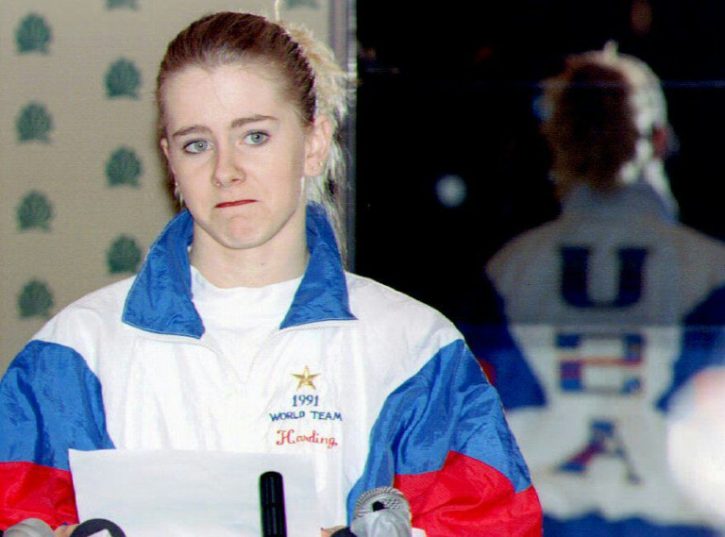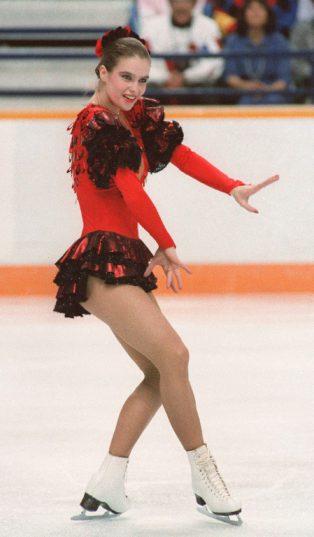For all its artistry, youth, charm and elegance, controversy simmers beneath the sequins in world figure skating.
Ahead of the Pyeongchang Olympics, here’s a look at what lurks behind the glamour and razzmatazz at winter sport’s biggest crowd-pleaser.
Herewith five controversies that rocked the rink:
The Russian mobster and the judge
The Salt Lake City 2002 ‘skategate’ scandal had all the ingredients o a Hollywood thriller. The two central characters were a French judge and a shadowy Uzbekistan-born businessman. The alleged Russian mobster was accused of conspiring to fix results. The vote-rigging scam centred on a deal to have French ice dancers Gwendal Peizerat and Russian-born Marina Anissina win gold to obtain a French judge’s vote so Russia’s Elena Berezhnaya and Anton Sikharulidze would win the pairs competition. An embarrassed International Olympic Committee was forced to take the unprecedented step of awarding gold to both the Russians and Canadian pair Jamie Sale and David Pelletier, who had lost out. The scandal led to a voting revamp and a three year ban for the French judge and the then French winter sports chief.
I, Tonya

Tonya Harding was banned for life after her ex-husband and bodyguard hired a “hit man” to club rival Nancy Kerrigan in the leg in the run up to the 1994 Games in Lillehammer
If Salt Lake has the makings of a film scenario, another infamous ice skating moment has already hit the big screen. “I, Tonya” is in South Korean cinemas from March 8, a fortnight after the action in the Pyeongchang ice rink has wrapped up. It tells the notorious story of US skate rivals Tonya Harding and Nancy Kerrigan. Harding was banned for life after her ex-husband and bodyguard hired a “hit man” to club Kerrigan in the leg in the run up to the 1994 Games in Lillehammer to boost Harding’s Olympic hopes. Kerrigan battled to be fit for the Games where she took silver with Harding in eighth. The sordid drama sparked massive interest in that year’s figure skating in the United States, with almost 50 percent of US households tuning in. While Kerrigan reaped the rewards of the notoriety the assault had brought her by turning professional, Harding retreated into the shadows, banished from the rink.
Corruption by committee
At Sochi four years ago the Russians angrily rejected accusations of voting skulduggery when Adelina Sotnikova won a first women’s gold for Russia amid controversy. An ever greater furore greeted Russian ice dancers Pasha Grishuk and Yevgeny Platov’ successful defence of their title, despite a fall, at Nagano in 1998. A tape-recording emerged of a Ukrainian judge allegedly trying to fix the result. Ex senior Canadian IOC official Dick Pound said: “”Winning or losing on the ice should not be decided in a committee room. “In Nagano, (the medal) was already decided before anyone had laced on skates.” The same judge was on the panel for the women’s final in Sochi.
The emperess with (barely) no clothes

Katarina Witt was the darling of East German skating, claiming gold at Sarajevo in 1984 and Calgary in 1988 by marrying skill with a daring dress sense
Katarina Witt was the darling of East German skating, claiming gold at Sarajevo in 1984 and Calgary in 1988. She married skill on ice with a daring dress sense, her sexy outfits making judges hot under the collar. One of her legacies was a rule change from the International Skating Union that competitive women skaters “must not give the effect of excessive nudity inappropriate for an athletic sport.” Witt, who posed nude for Playboy’s 1998 December issue, headed Munich’s bid to host the 2018 Games. After the unification of Germany, a hefty file emerged on Witt from the East German secret police, the Stasi, documenting the efforts made to keep her from defecting which included cars, accommodation and a passport to travel to the West, according to the Daily Telegraph in 2002.
‘The Father of Figure Skating’
A flamboyant enterprising New Yorker called Jackson Haines is credited with being the father of modern figure skating. In the 1840s, 60 years before the first Winter Olympics, his novel routine of pirouettes, dances and jumps to music was all too much for conservative America, and he was forced to leave his family behind to see if a European audience was more receptive to his unorthodox style, a world away from the staid rigid performances of the time. Europe was captivated by his shows, but before he could return triumphant to his homeland he died in 1875. His legacy lives on though, in one of the most basic moves, the sit spin.
Download our app




